Development Co-operation Directorate (DCD-DAC)
DACnews November 2012
DAC High Level Meeting 2012The DAC High Level Meeting (HLM) 2012 will take place in London on 4-5 December. In addition to DAC and OECD member states, high level representatives from a range of countries and international institutions will participate. The HLM will begin with the launch of the Development Co-operation Report (DCR) 2012: Lessons in linking sustainability and development. The launch will comprise a panel discussion on some of the major themes of the DCR 2012, moderated by J. Brian Atwood (DAC Chair). Panel members will include OECD Secretary General Angel Gurría, Andris Piebalgs (European Commissioner for Development), Charlotte Oades (Global Director, Women’s Economic Empowerment, Coca-Cola; former President of Coca-Cola Great Britain) and Erik Solheim (incoming DAC Chair; former Norwegian Minister for Development and Environment). The HLM offers an opportunity for political leaders to agree on joint action and forge a Post-2015 agenda: Global Partnership for Effective Development Co-operation: External development finance:
Fragile states in 2013Seven years after the OECD-DAC started tracking resource flows to fragile states, the latest report - Fragile states 2013: Resource flows and trends in a shifting world—highlights some remarkable facts:
This annual report on resource flows to fragile states provides the only overview of financial flows in this group of countries. It covers development co-operation from OECD countries and others, taxes, remittances, FDI, trade, peacekeeping flows, and illicit flows. For more information, see the publications section below.
New approaches to measuring poverty and well-beingPoverty reduction is one of the core aims of development co-operation. But how can it be measured appropriately? For a long time, poverty was primarily understood as income poverty. Today, the discourse has shifted towards a broader and more inclusive understanding, with the debate increasingly framed as a question of well-being. The sixth DAC Development Debate introduced two prominent approaches to measuring poverty and well-being: the Multidimensional Poverty Index (MPI) developed by the Oxford Poverty and Human Development Initiative (OPHI); and the OECD’s How’s Life approach. The MPI measures deprivation using ten indicators covering three dimensions (education, health and standard of living). Worldwide, 1.65 billion people are considered to suffer from multidimensional poverty (i.e. many more than those who fall below the 1.25 USD/day international poverty line). The MPI reveals the intensity of deprivation, which is not evidenced by income classifications. Another comparative advantage of the MPI is that it can be adapted nationally or locally to inform poverty reduction policies. According to OPHI Director Sabina Akire, Director of the OPHI, who presented the framework, the MPI is now used for national poverty measures by many countries around the world and could be used in a post-2015 framework. The second instrument, present by OECD’s Chief Statistician Martine Durand, is the How’s Life index. This index measures people’s well-being in a much more comprehensive way, including eleven dimensions: three material living conditions plus eight quality of life conditions, including subjective well-being. Similar to the MPI, the index reflects the need to move from “treasure what you measure” to “measure what you treasure”, i.e. to go beyond GDP and income. The empirical evidence gathered so far shows that health, life satisfaction and education matter most to people in OECD countries and beyond. Participants in the debate found that these approaches share the same challenges and theoretical approach, although they focus on different ends of the spectrum. Bringing them together into a universal measurement tool would allow for tailored national approaches and international comparability while broadening the lens through which poverty and well-being can be analysed. This would be extremely helpful in conceptualising a post-2015 development framework.
POINT OF VIEW: Think big or small? Get involved or wait-and-see? How to
|
|||||||
FEATURE ARTICLE by J. Brian Atwood
J. Brian Atwood was unanimously elected Chair of the OECD’s Development Assistance Committee in January 2011, stepping down from his position as Dean of the Hubert Humphrey School of Public Affairs at the University of Minnesota to take up this role. Mr Atwood served as Administrator of the United States Agency for International Development (USAID) from 1993 to 1999, during the administration of President Clinton. Before handing over the Chair of the DAC to Erik Solheim, Mr Atwood reflects on his term. The DAC: Moving global relationships to a new levelAs I prepare to leave the position of DAC Chair, I can’t help but reflect on the moment in time through which We celebrated the 50th anniversary of the DAC last year. I learned recently that over those 50 years, DAC nations have allocated USD 3.7 trillion of their taxpayers’ resources for development. Surely, some may say that not all that amount contributed to development. It could be argued that some of it even created negative effects of dependency. What one can assert, however, is that without that commitment of resources, the world would be in much worse shape today. Together with our many partners, we have accounted for fewer children dying, more food and better nutrition, cleaner water, better access to education, better performing micro-economic systems, governance institutions that work, and civil societies that participate in the life of their nations and hold their governments to account. Many low income countries are now middle income ones, and some are emerging with dynamic growth rates. One nation previously counted among the poorest of the poor—Korea—is now a proud member of the OECD and the DAC, and a key development cooperation provider. My tenure saw the G-20 bring the development mission to the summit with the Seoul Consensus on Development. And as the world began to focus on development, it became fashionable to contrast the new thinking of the day with old thinking that was so well captured by the word “aid”. Those in the worlds of trade and finance entered into a new world of discovery as they turned their attention to development cooperation. Why this shift in focus? Perhaps because globalization took a bad turn. More likely because of a combination of factors, including gains in development, which revised calculations on the global market. The old economies were stalling as new, vibrant ones were emerging. Nobel Laureate economist Michael Spence, in his excellent book The Next Convergence, observes that “developing-nation conditions and growth are relatively outside the range of our day-to-day experience.” Yet too often, that kind of humility is lacking from the judgments of Western economists and their prescriptions for our developing country partners. Self-interest, like the business cycle, has a short life span. Development has a long one. The financial crisis has helped to call attention to other global commons problems: the effects of climate change; disease that has no respect for sovereignty; food distribution and pricing issues; and the growing scarcity of water are key among them. Fragile states continue to threaten global stability by draining resources and hosting conflict and international terrorism. As the richer countries recognized that these threats do not yield easily to security or diplomatic solutions, they came to be seen as development problems. Hence, the elevation of development as one of the United States governments’ three Ds. When I was nominated to the position of DAC Chair, Richard Manning—an outstanding former Chair —observed in a blog that this was the first time the former head of a development agency would become Chair. Now I will be succeeded by the former Norwegian Minister for Development and the Environment, Erik Solheim. What is the attraction of this position for former heads of national programs? If, as some suggest, the DAC is becoming less relevant, why take the job? The answer was a simple one for me: the DAC continues to be at the intellectual center of the development mission at a time when its importance is growing, and when the world clearly needs an intellectual center for it. I am not suggesting that the DAC is a power in the traditional sense; it does, however, wield tremendous influence by speaking with and on behalf of its members and the developing world. DAC members provide a vital USD 130 billion a year in strategically important flows directly targeted at the world’s greatest development challenges—principal among them poverty reduction. This makes the DAC a unique entity and not just another committee of the OECD. Its capacity to support its own members with policy guidance and principles to improve development effectiveness, and to represent them in international forums and partnerships, gives the DAC a special standing. Never has the DAC’s influence been more prominent than in Busan, Korea last year. Armed with strong evidence provided by our superb Development Co-operation Directorate, development diplomacy and a willingness to engage, the DAC created the conditions needed to move global relationships to another level. Working with developing countries, civil society, the private sector, international organizations and our own members, we were able to promote a new Global Partnership. If this entity fulfills its potential, it will: 1) spur OECD finance and trade ministers to rethink the effect of their policies on development; 2) bring civil society and private sector partners closer to the core of the policy debate; 3) reduce the increasing fragmentation of development programs; 4) create more transparency to motivate our members to meet their commitments; 5) enable dialogue and coordination with other providers of development cooperation; and 6) redirect most of DAC development flows through country systems while strengthening country ownership. There is much more to be done to rationalize the international system and to make development a prime vehicle for positive change. We have worked well together to demonstrate to the world that “aid” is a thing of the past. I regret having to leave at this crucial juncture, but I am deeply gratified that someone of Erik Solheim’s stature will take the helm. In ten years’ time, the world of development may change so dramatically that the DAC will not be needed. Today, that is certainly not the case. |
First meeting of the Global Partnership Steering Committee
The DAC Chair will – along with the European Commission, Korea and the United States as representatives of the community of development co-operation providers – participate in the first meeting of the Steering Committee of the Global Partnership for Effective Development Co-operation. The meeting will be held in London on 5 and 6 December 2012, and will cover issues such as: the potential contribution of the Global Partnership to a broader post-2015 development agenda; progress and challenges in the implementation of commitments made at last year’s Busan High Level Forum on Aid Effectiveness; and preparations for a first ministerial-level meeting of the Partnership in 2013. The meeting will be co-chaired by ministers Justine Greening (UK), Armida Alisjahbana (Indonesia) and Ngozi Okonjo-Iweala (Nigeria). Further information on the Global Partnership and the work of its 18 member Steering Committee can be found here.
Paris Declaration Evaluation team receives Outstanding Evaluation Award
An independent evaluation of the implementation of the Paris Declaration was undertaken for the 2011 Fourth High Level Forum on Aid Effectiveness (Busan, Korea). The evaluation looked at how the principles of aid effectiveness have been put into practice by international development partners and what results this is having in developing countries. The DAC Evaluation Network supported this evaluation, whose outcomes include a synthesis report, 21 country evaluations, 7 donor studies and several thematic reviews. The evaluation was managed by an independent reference group that included developing countries and constituted a key input to the Busan High Level Forum.
Michael Quinn Patton, a pioneer in the field of evaluation, nominated the work for the American Evaluation Association's Outstanding Evaluation Award stating: “The evaluation process was participatory and consultative among partner countries, donors and international organisation participants”. DAC Chair Brian Atwood also lent his support to the nomination, noting “its significant contribution to international and national policy discussions on aid effectiveness and development”.
Read the press release and the Paris Declaration Evaluation Phase II Team’s acceptance remarks. Videos of the country evaluations are also available on You Tube.
OECD Policy Dialogue on Aid for Trade: 16–17 January 2013, OECD Conference Centre, Paris
The Aid for Trade Initiative has galvanised broad engagement from the donor community to help developing countries overcome structural and capacity limitations that undermine their ability to maximise benefits from trade. Global reviews clearly evidence that these programmes have bettered the livelihood of many men and women in developing countries. The OECD Policy Dialogue on Aid for Trade will bring together a wide range of stakeholders to discuss how aid for trade can remain relevant by delivering and managing results; easing binding constraints to trade expansion; promoting regional aid for trade programmes; reducing the thickness of borders; linking to value chains; and engaging the private sector.
For more information (including registration), visit http://www.oecd.org/dac/aidfortrade/aidfortradepolicydialogue2013.htm or contact: aft.dialogue@oecd.org.
Policy coherence for food security in developing countries
Jointly organised by the OECD’s Agriculture Committee (COAG) and the DAC, the annual Global Forum on Agriculture (GFA) took place at the OECD Conference Centre in Paris on 26 November 2012. It brought together policy makers in agriculture, development and food security from OECD countries, emerging economies and developing countries to discuss practical improvements at the global and country levels that can help deliver food security in developing countries. An additional session held on Tuesday 27 November identified practical next steps for taking forward work on issues where there is an emerging consensus for action. For further information, contact Dirk Dijkerman (dirk.dijkerman@oecd.org) or Earnan O’Cleirigh (earnan.ocleirigh@oecd.org).
Better governance for inclusive growth
Organised by the Public Governance Committee (PGC) with the support of the DAC on 21 November 2012, the Global Forum on Governance (GFG) is a key step in the implementation of the OECD Development Strategy, which recognises governance as one of the four major priority areas. The Global Forum provides a platform for dialogue among high level policy makers and leading experts from OECD and non-OECD countries. It highlights new directions emerging from public sector reforms worldwide and identifies lessons learned, good practices and innovative solutions in advancing the governance reforms necessary to foster inclusive growth. It also bridges perspectives and policy communities to identify priorities in governance reforms, generate policy dialogue and strengthen mutually beneficial collaboration among OECD and non-member countries. The results of the GFG will also contribute to the OECD’s initiative on New Approaches to Economic Challenges and will inform the development of an OECD good practice framework on “Better governance for inclusive growth”. For more information, contact Tatyana Teplova (Tatyana.Teplova@oecd.org).
The DAC in recent blogs and articles
The coverage of the election of Erik Solheim as the next DAC chair effective January 2013 included:
“Solheim looks forward to new job”, Views and News from Norway, 5 November 2012
“Erik Solheim new chair of OECD’s Development Assistance Committee”, Norway’s Ministry of Foreign Affairs, 2 November 2012
See also the “Reflections on the future role of the DAC and the challenges facing its new chair”, statement by incoming DAC Chair Erik Solheim, 1 October 2012
Other blogs, videos and articles:
"From guns to ploughshares: Reducing armed violence", by Erwin van Veen (Policy Analyst on Peace and Security) and Sarah Cramer (Junior Policy Analyst), OECD Insights, 28 November 2012
“The judgement of their peers: an interview with the OECD’s Karen Jorgensen”, Development Policy Blog, 19 November 2012
“Globalisation with a twist: Stability, volatility and fragility all in one”, by Alexandra Trzeciak-Duval (Head of Policy Division) and Erwin van Veen (Policy Analyst on Peace and Security), Stability: International Journal of Security and Development, 6 November 2012
“OECD: Finland must clarify its development co-operation priorities”, 4-traders, 6 November 2012
“OECD and ATAF strengthen tax co-operation with Africa”, African Tax Administration Forum, 25 October 2012
“British, Indonesian and Nigerian ministers meet in Tokyo to promote an inclusive Global Partnership for Effective Development Co-operation”, Fourth High Level Forum on Aid Effectiveness web site, 13 October 2012
"OCFA opens three-day training workshop on using quality standards for development evaluation", AMEinfo, 14 October 2012
"More than 50 years of ODA: Lessons learned and new approaches", remarks of the DAC Chair J. Brian Atwood during the Society for International Development Lecture Series, 4 October 2012 [Video]
"ODA and beyond: Setting the framework", remarks of the DAC Chair J. Brian Atwood for the Netherlands chapter of the Society for International Development, 25 September 2012
Peer reviews
DAC peer review of Finland 2012: Finland is making efforts to improve its development co-operation, 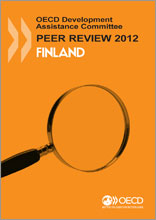 sharpening its focus and emphasising the importance of human rights. To make these efforts effective, the government should honour its commitment to increase funding, focus on areas and countries where it can have the most impact, and improve the way it manages development co-operation. The peer review was launched in Helsinki in a public event attended by DAC Chair J. Brian Atwood, the Finnish Minister of International Development Haidi Hautala, and representatives from Finnish ministries, civil society organisations (CSOs), academia and the private sector. “A major evaluation like this is always like a gift to the ones being studied and we will take full opportunity to learn from your remarks”, said Minister Hautala during the launch in Helsinki. The review praises Finland for increasing its aid by 35%, to just over USD 1.4 billion (0.52% of its GDP) during the 2006-11 period. Nonetheless, Finnish budget projections show that aid will level off over the coming two years, falling short by almost USD 50 million of the estimated volume needed to reach the 0.7% ODA/GNI target by 2015. The review warns that failure to increase its aid would hurt Finland’s reputation and diminish the impact of its programme in developing countries.
sharpening its focus and emphasising the importance of human rights. To make these efforts effective, the government should honour its commitment to increase funding, focus on areas and countries where it can have the most impact, and improve the way it manages development co-operation. The peer review was launched in Helsinki in a public event attended by DAC Chair J. Brian Atwood, the Finnish Minister of International Development Haidi Hautala, and representatives from Finnish ministries, civil society organisations (CSOs), academia and the private sector. “A major evaluation like this is always like a gift to the ones being studied and we will take full opportunity to learn from your remarks”, said Minister Hautala during the launch in Helsinki. The review praises Finland for increasing its aid by 35%, to just over USD 1.4 billion (0.52% of its GDP) during the 2006-11 period. Nonetheless, Finnish budget projections show that aid will level off over the coming two years, falling short by almost USD 50 million of the estimated volume needed to reach the 0.7% ODA/GNI target by 2015. The review warns that failure to increase its aid would hurt Finland’s reputation and diminish the impact of its programme in developing countries.
Partnering with civil society: 12 Lessons from DAC peer reviews: Civil society plays a vital role in development. Participants in the 2011 Fourth High-Level Forum on Aid Effectiveness (Busan, Korea) agreed on the need to enable CSOs to exercise their roles as independent development actors. The Istanbul Principles for CSO Development Effectiveness, in parallel, commit CSOs to becoming more predictable, transparent, driven by results and accountable. Yet while all DAC members work with CSOs and despite obvious advantages, working together is often challenging. Navigating and understanding the complex world of civil society, and finding the right balance between respecting CSO independence and attaching conditions to funding, are difficult for OECD governments. CSOs have problems with donor conditionality and a lack of meaningful dialogue. Lessons in partnering with civil society identifies common ground for dialogue and action, focusing on how DAC members and CSOs can create stronger, balanced partnerships to reach common development goals. Lessons in partnering with civil society represents the first-ever DAC publication on donor partnerships with CSOs, which is remarkable given that at least 16% of total ODA (USD 18.7 billion) was spent by CSOs in 2010. The lessons will be used as good practice benchmarks in forthcoming DAC peer reviews.
View the presentation given at the launch of Partnering with civil society on 24 October 2012. Should you wish to have a copy of the publication, please contact Melissa Sander.
Publications
Fragile states 2013: Resource flows and trends in a shifting world and the supporting dataset (see article above) will soon be available on the OECD iLibrary and in the OECD Bookshop. The factsheet is already available here. Please contact the INCAF Secretariat (INCAF.Secretariat@oecd.org) for additional information.
Evaluating peacebuilding activities in settings of conflict and fragility: Improving learning for results draws on 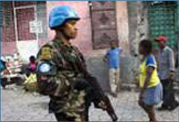 real-world experience and an extensive testing phase to provide step-by-step guidance on planning, carrying out and learning from evaluation, as well as some basic principles on programme design and management in situations of conflict and fragility. Peacebuilding and statebuilding support in fragile and conflict affected states too often falls short of expectations and how ineffective, mis-targeted or poorly implemented assistance is not only a waste of money – it is also costly in terms of lives and livelihoods. Produced by the DAC Network on Development Evaluation and the DAC International Network on Conflict & Fragility in a unique collaborative effort, this publication includes a call for donors and partners to:
real-world experience and an extensive testing phase to provide step-by-step guidance on planning, carrying out and learning from evaluation, as well as some basic principles on programme design and management in situations of conflict and fragility. Peacebuilding and statebuilding support in fragile and conflict affected states too often falls short of expectations and how ineffective, mis-targeted or poorly implemented assistance is not only a waste of money – it is also costly in terms of lives and livelihoods. Produced by the DAC Network on Development Evaluation and the DAC International Network on Conflict & Fragility in a unique collaborative effort, this publication includes a call for donors and partners to:
- base their work on a clear understanding of the context for conflict, its key drivers, political economy, dynamics and actors, and a deep analysis of how their own activities will interact with and impact (directly or indirectly) peacebuilding and statebuilding processes
- use critical analysis to generate more credible information about the effectiveness and results of peacebuilding strategies and programmes
- question the underlying assumptions of their work and strengthen the evidence base for peacebuilding support by testing their theories about how change happens
- be responsive and sensitive to conflict to avoid making things worse when designing, implementing or evaluating programmes
To learn more about recent results in conflict settings, read the latest conflict and peacebuilding evaluations from DAC members.
Aid in support of gender equality and women’s empowerment: Statistical overview examines data on DAC members’ aid flows that explicitly target gender equality and women’s empowerment, amounting to around USD 25.3 billion/year in 2009-10 or 31% of total bilateral aid allocated by sector. The paper provides guidance for analysis and interpretation of gender equality marker data, and discusses the main methodological issues and possible ways forward.
|
OECD DAC COUNTRIES’ NET ODA IN 2011: |
|
USD 133.5 billion, down by -2.7% in real terms, and 0.31% of DAC members’ combined GNI |
TOP
Vacancies
Conflict and Fragility - Policy Analyst(s)/ Economist(s) (Reference number 08384): The Development Co-operation Directorate (DCD) team on conflict and fragility is looking for Policy Analyst(s)/ Economist(s) to: i) Strengthen the capacity of the International Network on Conflict and Fragility (INCAF) to translate agreed policies into operational changes and improve the results of international development efforts in fragile and conflict affected states; ii) Lead INCAF’s work to monitor the quality and quantity of international engagement in fragile and conflict-affected states; iii) Drive INCAF’s agenda on knowledge development and policy coherence.
Co-ordinator for the Secretariat of the International Dialogue on Peacebuilding and Statebuilding (Reference number 08440): The Co-ordinator will work as part of a small team under the overall guidance of the Dialogue Co-chairs and the Dialogue Steering Group, and report to the team leader on conflict, fragility and governance in the Policy Division of the OECD Development Co-operation Directorate.
Thomas J. Alexander Fellowship Programme (Reference number 08382): This fellowship programme will support individuals in conducting quantitative, evidence-based research on education, particularly in emerging economies, and in linking that research to education policy and practice. Candidates with a doctoral degree, who are familiar with quantitative research methods and the use of large-scale surveys, and who have published work in scientific journals are encouraged to apply. For more information, see http://www.oecd.org/pisa/pisafellowshipsandgrants/.

Related Documents


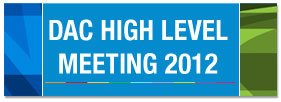 common vision for advancing development in a challenging and dynamic international context. At a juncture that will define development co-operation for years to come, the HLM will focus on three strategic issues:
common vision for advancing development in a challenging and dynamic international context. At a juncture that will define development co-operation for years to come, the HLM will focus on three strategic issues: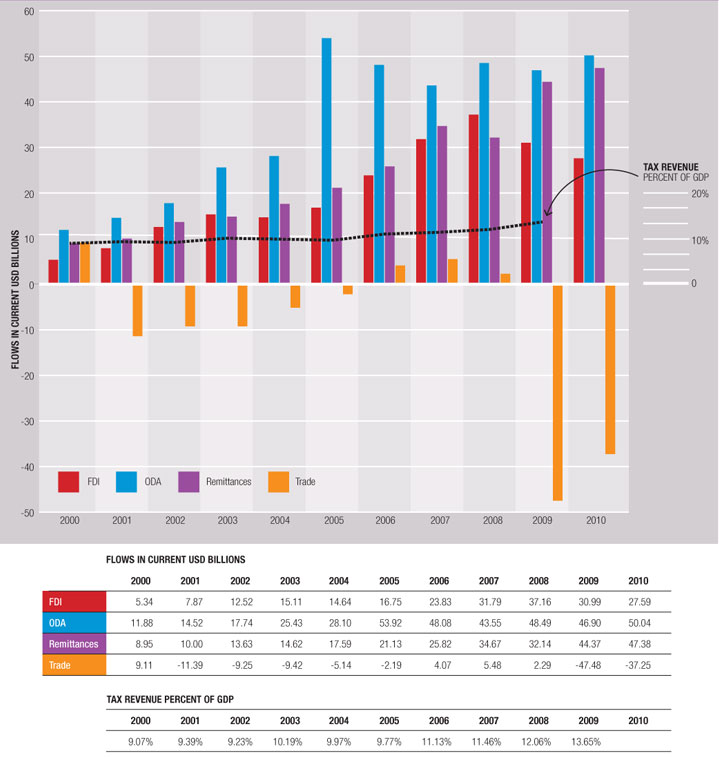
 The hype has begun as the world counts down to 2015 – the finishing line for the MDGs and the starting point of a new goals framework, which is expected to come to a conclusion with a resolution to be adopted by the United Nations General Assembly (UNGA) in October 2015.
The hype has begun as the world counts down to 2015 – the finishing line for the MDGs and the starting point of a new goals framework, which is expected to come to a conclusion with a resolution to be adopted by the United Nations General Assembly (UNGA) in October 2015.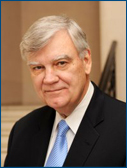 the development community has passed during my tenure. It has been a time of great change, and we can feel confident that the DAC played a significant role in shaping that change. For me, the highlight was the High Level Forum we held in Busan, Korea and its outcome: the Global Partnership for Effective Development Co-operation. The DAC has made many contributions over the years, but this one ranks up there with another major one: the report that produced the Millennium Development Goals.
the development community has passed during my tenure. It has been a time of great change, and we can feel confident that the DAC played a significant role in shaping that change. For me, the highlight was the High Level Forum we held in Busan, Korea and its outcome: the Global Partnership for Effective Development Co-operation. The DAC has made many contributions over the years, but this one ranks up there with another major one: the report that produced the Millennium Development Goals.